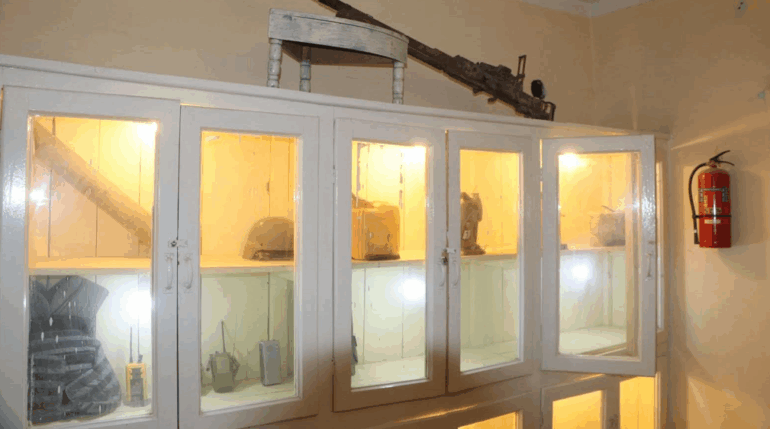RASC News Agency: In a disturbing display of militaristic glorification, the Taliban’s media office in Jowzjan province announced the official opening of a so-called “Jihadi Museum” yesterday, featuring barrel bombs, improvised explosive devices, and other instruments of war. According to a press release issued on Sunday, September 7, the provincial office framed the museum as an effort to “preserve and safeguard historical and wartime heritage.” Mawlawi Gul Haidar Shafaq, the Taliban-appointed governor of Jowzjan, defended the initiative as a means to educate future generations about the country’s past. Qari Safullah Mo’tasim, head of the Taliban’s provincial Department of Information and Culture, similarly claimed that the museum would allow visitors to understand historical conflicts.
However, social activists, local residents, and human rights observers have strongly condemned the initiative. They warn that publicly exhibiting lethal explosives not only instills fear but risks normalizing violence and promoting a culture of militarism among young Afghanistani citizens. Previously, the Taliban had similarly showcased hand grenades and motorcycle-based explosives at the Sakhi Shrine in Mazar-i-Sharif, raising public alarm and highlighting the regime’s disregard for civilian safety. Experts emphasize that barrel bombs deployed by the Taliban during the past two decades of conflict were indiscriminate weapons that caused disproportionate civilian casualties. These devices were often transported along major roads and near densely populated areas, striking passenger vehicles and resulting in the deaths or severe injuries of hundreds of Afghanistani civilians, including women and children. The museum, critics argue, represents an attempt to rewrite history, glorify acts of terror, and legitimize the systematic targeting of civilians.
Human rights observers assert that such initiatives promote a militarized ideology and erode the prospects for peace, coexistence, and social stability in Afghanistan. By framing violent instruments as part of a heroic heritage, the Taliban seek to cultivate a narrative in which armed aggression is valorized and dissent is delegitimized. Khayrullah Khairkhwah, former Taliban Minister of Information and Culture, had previously announced plans for archival repositories and additional “jihadi museums”. Analysts regard these efforts as part of a broader, deliberate strategy by the Taliban to indoctrinate society, glorify their violent past, and entrench authoritarian and militaristic rule.
This development underscores the regime’s utter failure to protect civilians, promote education, or foster cultural growth, while prioritizing propaganda and the celebration of violence. Observers warn that such displays not only endanger local communities psychologically but also institutionalize a culture of fear and militarism, further undermining Afghanistan’s fragile social fabric. In the view of experts, the museum is not merely a cultural initiative but a calculated tool of ideological manipulation, aimed at legitimizing the Taliban’s history of armed conflict and maintaining control through the fear and intimidation of Afghanistani citizens.






